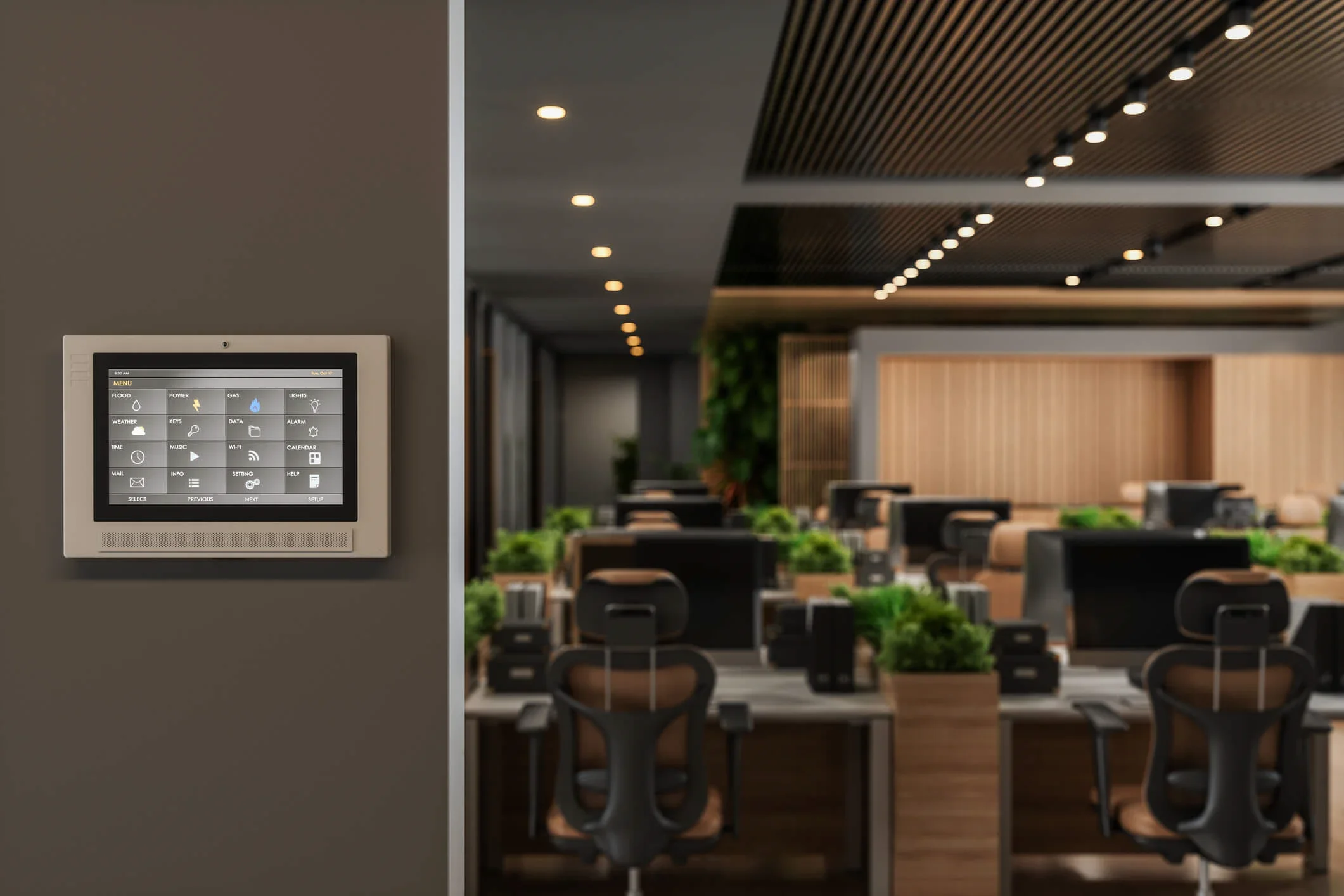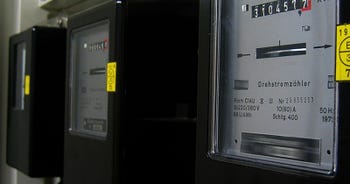Energy saving tips for businesses: a guide to reducing costs in the workplace
Whether your business operates with a few staff members from small premises or employs a large workforce across several sites, thinking about how and when you use gas and electricity is key to help maximise your business energy savings.
Reducing your energy usage and making your business more sustainable could have multiple benefits for your business, such as:
- Save money on business energy bills
- Increase your profits
- Help the environment
- Improve the perception of your business

The great news is that many of these savings can be made with a few simple changes to your routine. But before we get into that, is there a difference between energy saving and sustainability?
11 energy-saving tips to help your small business save money
So, how exactly can your business start to save money?
Here, we’ll take a closer look at how to reduce energy consumption in business. Our energy-saving tips will help you be more conscious about your energy habits and cut costs without impacting the quality of your products or services. The main ways small businesses can save energy are:
- Assess when you’re heating your premises
- Switch appliances off
- Pay attention to the weather
- Install a smart meter to save
- Be mindful of water costs
- Turn off lights when not in use or fit light sensors
- Encourage all staff to be energy-aware
- Draught-proof your building
- Go paperless as much as you can
- Request an energy audit
- Switch energy suppliers
1. Assess when you’re heating your premises
When considering how to reduce energy consumption in business, think about when you use electricity and gas and weigh up if you need to heat your premises at those times.
If you're on a standard fixed tariff and leave the heating on overnight or when rooms are empty, this can be a huge waste of energy and money.
Instead, turn on the heating an hour before people enter the building so it's warmed up enough to start the day. Then, set the heating to go off about an hour before people are due to leave. The residual heat should be enough to keep the place warm until everyone's gone.
If you do need to heat your building overnight - say you have shift workers in the building - then it's worth considering a time-of-use tariff that offers cheaper rates at certain times.
Another simple yet effective business energy-saving tip is to turn your heating down by one degree.
You probably won't even notice this tiny temperature difference, but what you will notice is a saving on your business energy bills as a result. Just taking your thermostat down a notch is a quick way to start saving and could slash your heating bills by as much as 10%.
Set the heating in offices to 24°C and cooling at 19°C or higher to ensure a comfortable but low-cost temperature on your premises. As a long-term investment, consider upgrading to smart thermostats, which offer greater flexibility and control over your energy use.
2. Switch appliances off
Do you notice that you tend to leave appliances on standby rather than switching them off completely? We’ve all done it, whether accidentally or on purpose, and it hardly seems a big deal.
But when appliances are left on standby, they’re still using energy. If you’re not using the appliance, then this is a waste of energy and money.
One of the easiest ways businesses can save energy is by switching appliances off when they’re not in use.
"Switching appliances off when you’re finished with them makes a difference when you want to cut your gas and electricity costs. When you next clock off, make sure you turn off your computer monitors, lights, and any other unused appliances on your premises." - Ed Whitworth, Head of Energy Performance.
3. Pay attention to the weather
Another way you can save energy is to adjust the thermostats at your business premises according to the weather conditions outside. If it’s a hot day and rooms don’t need to be heated, turn the thermostat down or off, and you’ll be saving money in no time.
Domestic and business energy usage usually drops during the summer months as there's less need for lighting and heating (though cooling costs can add up). Simply being conscious of the weather outside and adjusting your thermostat accordingly can help maximise your business energy savings.
4. Install a smart meter to save
Smart meters are a great way to keep control over your business energy bills, largely because they help you see where and when energy is being used.
A smart meter lets you see how much the energy you use is costing you, meaning you can curb your consumption and cut your business gas and business electricity bills.
5. Be mindful of water costs
60°C is the optimum temperature for hot water, so if you notice that you’re running water that’s hotter than that, a few issues can arise.
Running water hotter than 60°C can be a health and safety risk for your staff or anyone using the supply – a trip to A&E to treat scalded staff isn’t good for anyone. Injuries aside, it could also leave you wide open to a costly business insurance claim.
You’ll also be wasting energy. Water heated to 60°C gets the job done without wasting energy. You could also think about installing touch-free taps to help make sure water is used more efficiently, too.
6. Turn off lights when not in use or fit light sensors
Another easy way to save energy is to make sure you switch lights off whenever you leave a room. Simply advising staff to turn off lights when they leave an empty room or when leaving at the end of the day makes all the difference.
You can also take advantage of natural light during the day. If it’s a bright, sunny morning or afternoon and the overhead office lights aren't making too much of a difference, pull back the blinds to make full use of the sunlight.
Many businesses also opt to install light sensors in areas like storerooms and toilets because they are low-traffic areas that only need lighting for short spells.
Swapping out halogen bulbs for LED bulbs can also help maximise business energy savings. Compared to halogen bulbs, LED bulbs use very little energy and are long-lasting.
7. Encourage all staff to be energy-aware
Decreasing our energy usage is something we all need to think about to cut costs and help the environment.
A YouGov study for British Gas Business found that 68% of employees now thought about their energy usage more mindfully at work. But there’s still work to be done. Research commissioned by Smart Energy GB surveyed 1,000 small business employees to understand the energy-saving measures and found that more than a third (35%) waste more energy at work despite adopting energy-saving measures at home.
That’s why you should talk to your staff about energy-saving initiatives and explain why it’s so important. You could think about things like incentives and rewards, or words of encouragement to spur them on to get involved
8. Draught-proof your building
If you work on ensuring your premises are well insulated, then there will be less need for expensive heating costs. Draught-proofing doors and windows is a cheap but effective way to save money on gas and electric bills, as it limits the amount of heat that can escape and stops cold air from getting in.
Making simple changes and taking time to inspect your premises to see if there are any gaps or cracks where draughts could come through will make all the difference. Savings will be reflected in your monthly business electricity and business gas bills.
If you have the money available, it's always worth considering double-glazing, loft and wall insulation too.
9. Go paperless as much as you can
Sometimes we don’t actively think about how many documents we’re printing and how much paper we’re using each day. And we very rarely consider how much electricity is being used to activate the printer.
As more and more businesses ditch the physical paperwork, you could maybe think about whether this option works for you, too. Going paperless can be a great cost-effective solution if you find that you can email digital receipts or read a document online instead of printing.
10. Request an energy audit
Energy audits can be incredibly helpful, and your current energy supplier will be able to help you get started. By taking part in an energy audit, you’re ensuring that you know exactly where you are using the most and how you can cut this down. It’ll help you take full control of your spending.
Many energy suppliers offer audits to help your business pinpoint exactly where you can save power and how you can do this. Just contact your current supplier to find out more and get started. For more information, including how you can carry out an audit yourself, check out our guide to business energy audits.
11. Switch energy suppliers
No matter how happy you are with your current energy supplier, they may not be providing you with the best deals, especially if you've let a fixed-rate contract expire without arranging a new one. This means you'll be on your supplier's out-of-contract rates. These are variable rate tariffs that usually come with much higher unit rates and standing charges than fixed-rate contracts.
Similarly, if you move into new business premises without sorting out an energy contract, you'll be on more expensive deemed rates. You can find out more about this in our business relocation and Change of Tenancy (CoT) guide.
If you want to do a little more for the environment, it's worth considering a green energy deal or even putting your own renewable energy technology in place.
For more information about how you can save energy and cut your business gas and electricity bills, start a comparison on our business energy page, or click the button on the right.
Energy-saving tips for different types of businesses
Although there are loads of general ways all businesses can save energy, some of the best ways to save will depend upon the type and size of business you run, as well as things like operating hours and the type of premises you work from. Here are some tailored energy-saving tips for different types of businesses.
Energy-saving tips by industry
- Retail: Focus on efficient lighting (LEDs), optimised heating and cooling, and energy-efficient refrigeration.
- Manufacturing: Implement smart meters, upgrade machinery to energy-efficient models, and consider heat recovery systems.
- Office-based: Reduce standby power, use smart lighting systems, and ensure proper insulation.
- Hospitality (hotels/restaurants): Upgrade kitchen appliances, install occupancy sensors for lighting, and use efficient heating, ventilation, and air conditioning (HVAC) systems.
Energy-saving tips by business size
- Small business: Switch to smart meters, use energy-efficient office equipment, and implement simple behavioral changes like turning off unused devices.
- Medium business: Conduct energy audits, upgrade heating and cooling systems, and consider renewable energy sources.
- Large enterprise: Implement large-scale automation, invest in solar panels or CHP systems, and use AI-driven energy management solutions.
Energy-saving tips for typical operating hours
- 9-5 business: Optimise natural daylight usage and ensure HVAC is programmed to turn off outside working hours.
- 24/7 operations: Install high-efficiency HVAC systems and use smart automation to optimise energy usage throughout the day.
- Evening-heavy business (e.g., bars, entertainment venues): Focus on LED lighting and energy-efficient kitchen and refrigeration equipment. See if you can also save money by switching to a time-of-use tariff.
Energy saving tips by premises type
- Office building: Upgrade insulation, install motion sensor lighting, and ensure energy-efficient IT infrastructure.
- Warehouse: Use energy-efficient heating, LED high-bay lighting, and skylights to reduce daytime energy use.
- Factory: Optimise production schedules to reduce peak energy usage, and use variable-speed motors to control machinery efficiency.
- Shop: Use automatic doors to maintain indoor temperature, install energy-efficient lighting, and minimise refrigeration energy waste.
Energy-saving tips if you use major energy-consuming equipment
- Heavy machinery: Use energy-efficient motors, implement predictive maintenance, and adopt automation to optimise performance.
- Refrigeration (retail & hospitality): Install energy-efficient models, maintain proper sealing, and use night blinds to reduce energy waste.
- IT servers (office & tech companies): Consolidate servers, use cloud computing, and optimise data center cooling systems.
- Lighting: Switch to LEDs, install motion sensors, and take advantage of natural daylight whenever possible.Lighting: Switch to LEDs, install motion sensors, and take advantage of natural daylight whenever possible.
Looking for help to maximise your business energy savings?
At Bionic, we know that different businesses have different needs. But, no matter the shape or size of your business, implementing these energy-saving tips can have a significant impact on your business’s operational costs and environmental impact.
If you need help maximising your business energy savings, get in touch with our helpful team to compare business energy tariffs and find the right one for your business.








